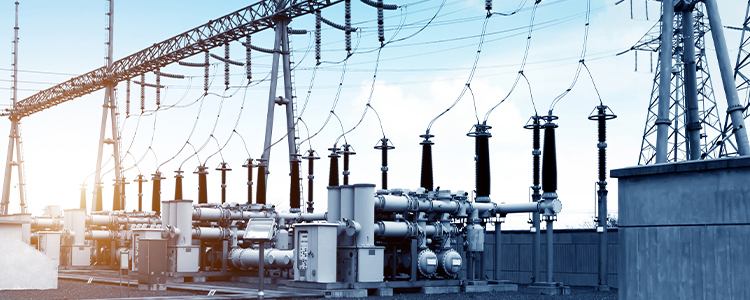- All
- Product Name
- Product Keyword
- Product Model
- Product Summary
- Product Description
- Multi Field Search


Views: 0 Author: Site Editor Publish Time: 2024-10-08 Origin: Site
The capacity and number of transformers in a substation are crucial factors that impact the structure of the power grid, the safety and reliability of the power supply, and economic efficiency. The selection of transformer capacity and quantity should be determined based on local power supply conditions, load characteristics, power consumption capacity, and operational modes. Comprehensive consideration of relevant standards and regulations is also necessary. According to these guidelines, the following rules should be followed:
Selection of 10(6)kV Distribution Transformers
Clause 3.3.1 of the Design Code for Substations of 20kV and Below stipulates that the substation should be equipped with two or more transformers when one of the following conditions is met:
1. A large amount of primary or secondary loads is present;
2. There is significant seasonal load variation;
3. The concentrated load is large.
Selection of 35~110kV Main Transformers
Clause 3.1.2 of the Design Code for 35~110kV Substations states: Substations with primary and secondary loads should be equipped with two main transformers. When it is technically and economically reasonable, more than two main transformers can be installed. If the substation can obtain sufficient power supply from the medium- or low-voltage side of the grid, one main transformer may be installed.
Selection of 220~750kV Main Transformers
Clause 5.2.1 of the Technical Code for the Design of 220kV~750kV Substations states: The number of main transformers should be determined according to the approved power system planning and design. When any transformer within the same voltage network of the substation encounters an accident, other components should not exceed the specified post-failure overload capacity. If the substation has two or more main transformers, after one of them goes out of service due to an accident, the remaining transformers' capacity should ensure that the station can carry 70% of the full load without overloading. The first- and second-level loads must be guaranteed within the allowable time, considering the overload capacity. If the substation has other power sources to ensure that the first-level load is covered after a transformer goes out of service, one main transformer may be installed.
Selection of 10(6)kV Distribution Transformer Capacity
Clause 3.3.2 of the Design Code for Substations of 20kV and Below stipulates: When a substation is equipped with two or more transformers, the capacity of the remaining transformers should meet the power demand of all primary and secondary loads when any one transformer is disconnected.
Selection of 35~110kV Main Transformer Capacity
Clause 3.1.3 of the Design Code for 35~110kV Substations states: For substations with two or more main transformers, when one main transformer is disconnected, the remaining transformers (including overload capacity) should meet the power demand of all primary and secondary loads.
Selection of 220~750kV Main Transformer Capacity
Clause 5.2.1 of the Technical Code for the Design of 220kV~750kV Substations specifies: The number of main transformers should be determined according to the approved power system planning and design. In case of an accident involving any transformer within the same voltage network of the substation, the remaining components should not exceed the specified post-failure overload capacity. If the substation has two or more main transformers, after one of them goes out of service due to an accident, the remaining transformers' capacity should ensure that the station can carry 70% of the full load without overloading. The first- and second-level loads must be guaranteed within the allowable time, considering the overload capacity. If the substation has other power sources to ensure that the first-level load is covered after a transformer goes out of service, one main transformer may be installed.
Differences Between Distribution Transformer and Substation Main Transformer Capacity Selection
Based on the above content, we can see that in the event of an accident, the overload capacity of distribution transformers is not considered. However, for main transformers from 35kV to 750kV, the overload capacity is always considered. The allowable overload operation time of oil-immersed transformers is shown in the table below:



Example: A new 110kV substation has a calculated load of 16MVA, of which the primary load is 5MVA, and the secondary load is 6MVA. Assuming the transformer overload capacity is considered as 1.2 times, how many transformers should be installed, and what is the minimum required capacity? (The impact of main transformer load rate is not considered in this example).
Solution:
· According to Clause 3.1.2 of the Design Code for 35~110kV Substations, two main transformers should be selected.
· According to Clause 3.1.3 of the Design Code for 35~110kV Substations, let the capacity of each main transformer be S, then:
2×S≥16 & 1.2×S≥(5+6)
Therefore,
S≥9.17MVA,so the minimum capacity of the main transformer should be 10MVA.
Analysis and Solution for The Failure of 35kV Dry-Type Transformer Lightning Impulse Test
Short Circuit Failure in A 3500kVA Oil-Immersed Wind Power Transformer Due to Cost Reduction
Why Dry-Type Transformers Are Superior to Oil-Immersed Transformers in Cold Climates
Analysis of Causes of Failure in High-Voltage Foil-Wound Dry-Type Transformers
Maintenance Requirements for Dry Type and Oil-Immersed Transformers